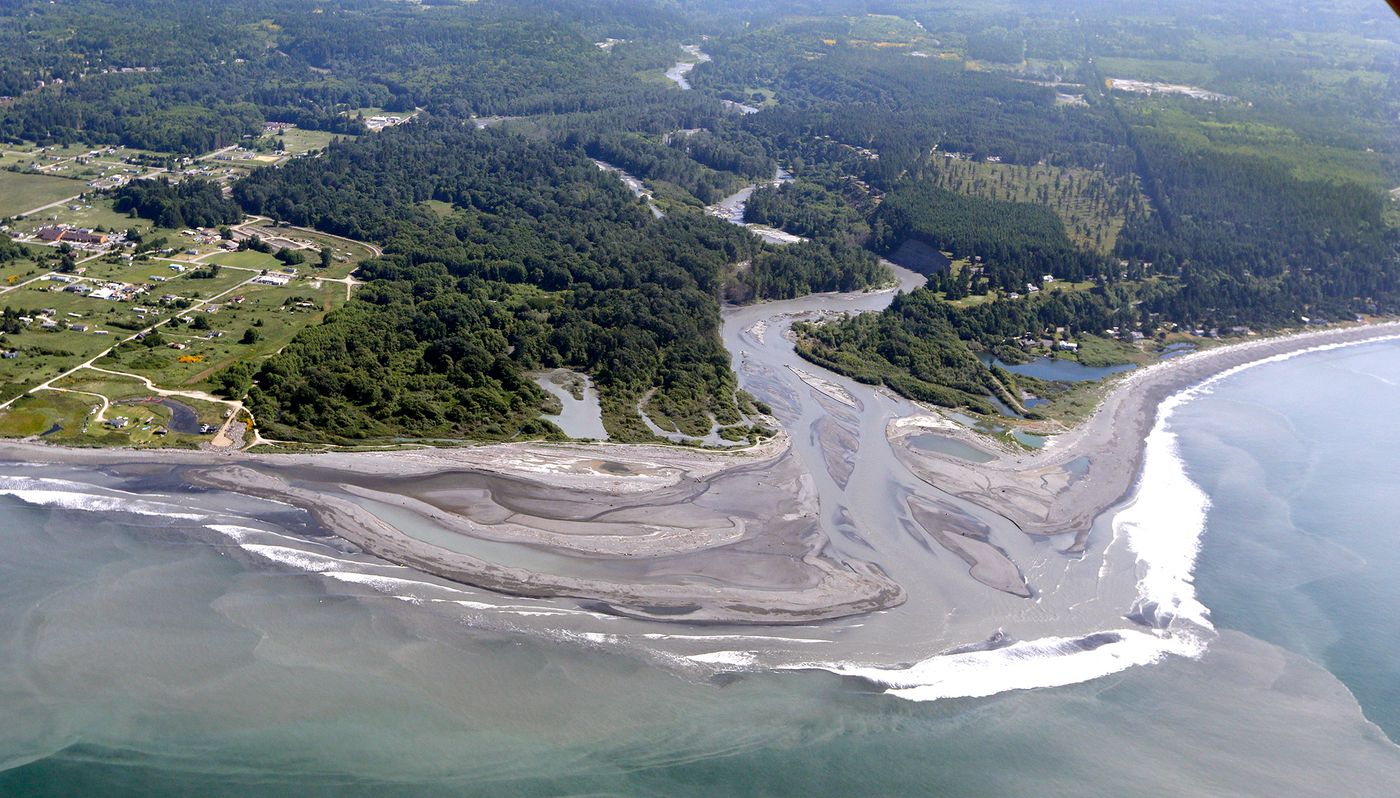Just about two years ago, in August 2014, workers completed the largest dam removal project in the history of the United States. After more than a year of dismantling the 210-foot-high (64-meter-high) Glines Canyon Dam, the Elwha River in northwestern Washington State now flows freely to the ocean. The U.S. National Park Service approved the project in 2011 given the ecological importance of the surrounding area: Olympic National Park. The goal was to remove unneeded, outdated dams and restore a natural river system, with presumed benefits for fish and other wildlife.
And two years after that last piece of concrete was dismantled, the benefits are showing.
Anne Shaffer, a marine biologist with the nonprofit Coastal Watershed Institute in nearby Port Angeles, Washington, and a Ph.D. candidate at the University of Victoria in Canada, has been working on the Elwha system since the early 1990s, with a particular focus on what's called the "nearshore environment." This is an ecological zone of aquatic habitat along the shoreline that "offers refuge and feeding areas for fish and other organisms that helps them transition from freshwater to marine habitat," says Shaffer. Nearshore environments include deltas and estuary systems near the mouths of rivers as well as seagrass beds in shallow water.
Shaffer is one of the champions for the salmon that have already returned to the Elwha River after nearly a century of absence. In an interview with
National Geographic, Shaffer comments on the change in the nearshore area since the removal of the dam: “It was really surprising to us how fast things changed. We have seen an increase in good habitat by about a hundred acres (40 hectares) and an immediate response in the fish community. We found new species coming to the area within weeks of the dam removal starting. We're now into the second year post-dam removal. The seafloor near the mouth of the river has risen by about 10 meters (33 feet), creating a whole new delta. The estuary had been badly reduced because of sediment starvation, but its return has been incredible to watch.”
She states that the benefits and return of “good habitat” far outweighs the few kelp beds that were covered in sediment from the dam’s removal. The most pressing risk now for the region is that it is not protected by the national park and therefore threatened by desires for development.
The success of the dam removal on the Elwha hopes to be a precedent for other dam removals across the country and world.
Sheffer states: “We hope to inform others so they know how to do dam removals to optimize the nearshore environment. You need to let the sediment come to the shore. Let that restoration happen. The other thing is to look at dam removal in its entirely, including what happens to the nearshore, and make sure that is a restoration priority.”
Sources:
National Geographic,
Unofficial Networks









